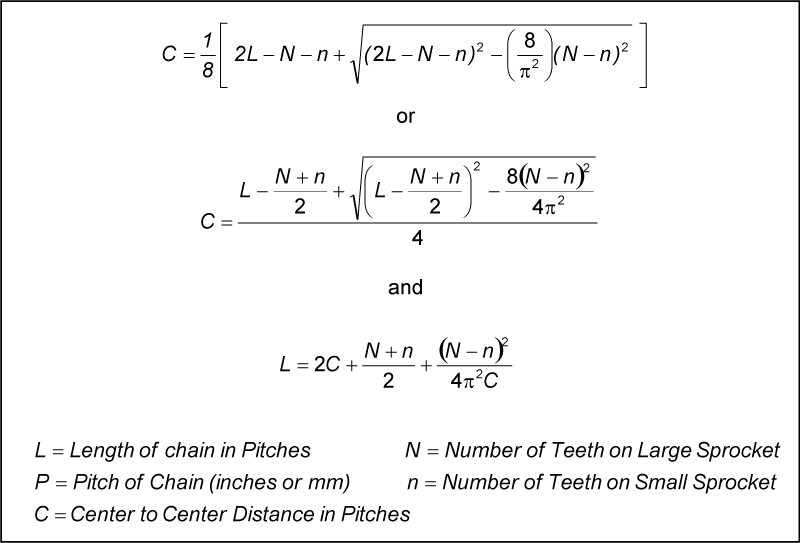Difference between revisions of "Chain Length Calculation"
From Pvdwiki
PVDdisease (talk | contribs) (→Understanding the Problem) |
(→Tabular Example) |
||
| Line 28: | Line 28: | ||
===Tabular Example=== | ===Tabular Example=== | ||
[[Image:Center-to-center-table.png]] | [[Image:Center-to-center-table.png]] | ||
| + | |||
| + | ===For Single Speed Mountain Bikes=== | ||
| + | |||
| + | [[Image:Gear-choice-histogram.gif]] | ||
| + | |||
| + | |||
| + | |||
[[Category:Motorcycle]] | [[Category:Motorcycle]] | ||
[[Category:Drivetrain (Motorcycle)]] | [[Category:Drivetrain (Motorcycle)]] | ||
[[Category:Bicycle]] | [[Category:Bicycle]] | ||
[[Category:Drivetrain (Bicycle)]] | [[Category:Drivetrain (Bicycle)]] | ||
Revision as of 19:11, 6 December 2006
Contents
Understanding the Problem
A chainwheel is not round. Rather, it is a polygon with facet lenth of the chain pitch. The chain leaves the chainwheel, at maximum, tangent to the pitch diameter. The chain then travels in a (theoretically) straight line to the other chainwheel, meeting it in a similar fashion.
This makes for some interesting math. I really have nothing better to do. I like to criticise other people, it makes me feel smart.
The most accurate math
Some Approximations
I'm not a big fan of approximations. Spreadsheets exist for a reason.
I will add some though, just for comparison.





